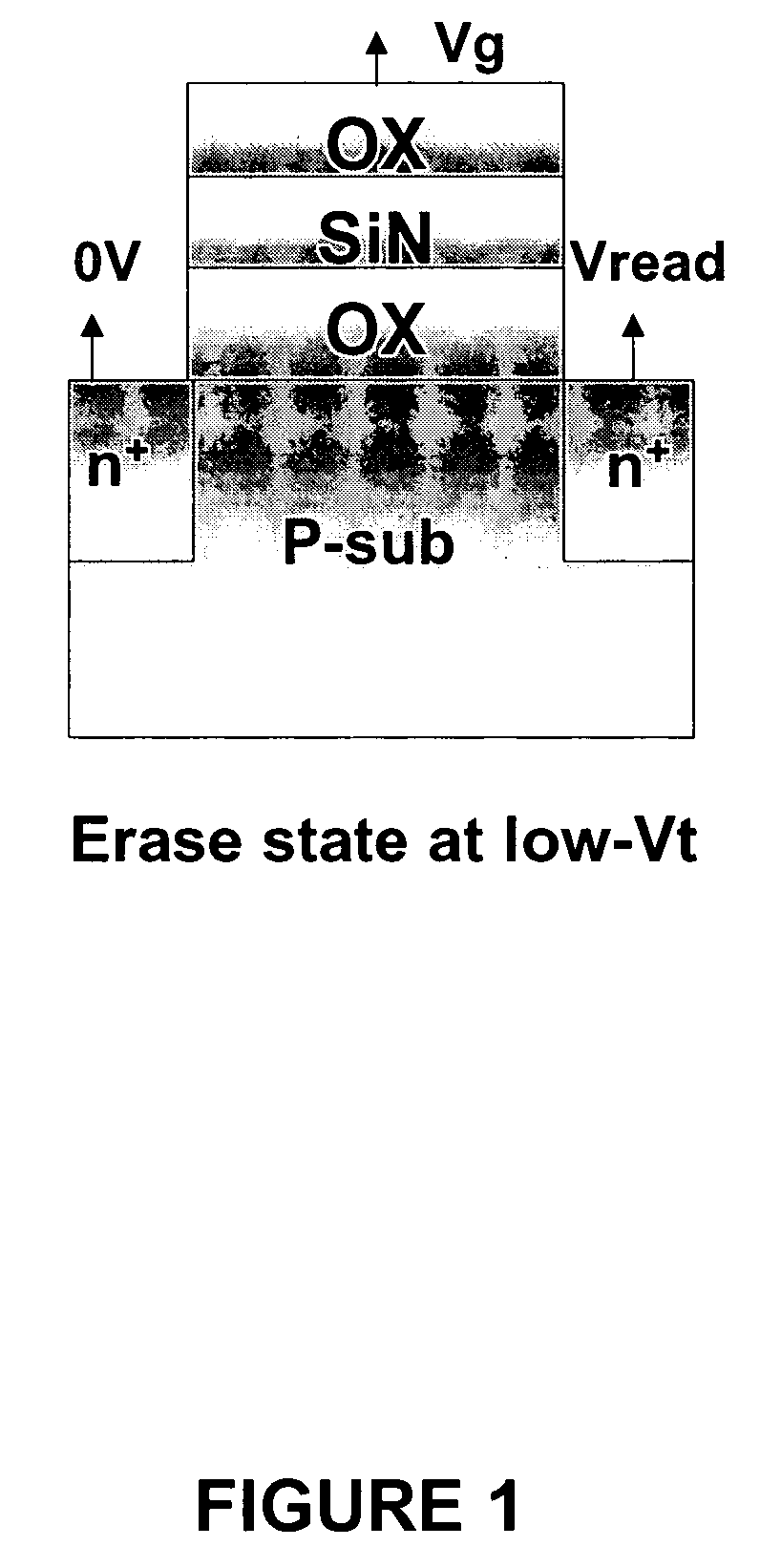Pulse width converged method to control voltage threshold (Vt) distribution of a memory cell
a voltage threshold and converged method technology, applied in static storage, digital storage, instruments, etc., can solve the problems of affecting the time it takes to erase a memory cell, many reliability issues, and degradation of the nitride trapping memory cells, so as to reduce the power requirements for implementing programming and achieve good charge/data retention, the effect of reducing the power requiremen
- Summary
- Abstract
- Description
- Claims
- Application Information
AI Technical Summary
Benefits of technology
Problems solved by technology
Method used
Image
Examples
Embodiment Construction
[0037]A pulse width converged method is used to control voltage threshold (Vt) distributions during the operation of a plurality of multi-level storage memory cells. Particularly, the method of the present invention is related to a plurality of nitride trapping memory cells and a plurality of PHINES cells, but other multi-level memory cells can be used with the present invention. Furthermore, the present invention relates to the operation on a plurality of non-volatile multi-level memory cells, wherein the operation includes programming and erasing, and the cells are capable of storing multiple independently charge bits (e.g., data bits) in a charge storage layer.
[0038]The present invention controls the voltage threshold (Vt) distributions during the operation of a plurality non-volatile memory cells by varying the pulse width while maintaining constant operating voltages. The operation of the non-volatile multi-level memory cells is either a programming operation or an erasing oper...
PUM
 Login to View More
Login to View More Abstract
Description
Claims
Application Information
 Login to View More
Login to View More - R&D
- Intellectual Property
- Life Sciences
- Materials
- Tech Scout
- Unparalleled Data Quality
- Higher Quality Content
- 60% Fewer Hallucinations
Browse by: Latest US Patents, China's latest patents, Technical Efficacy Thesaurus, Application Domain, Technology Topic, Popular Technical Reports.
© 2025 PatSnap. All rights reserved.Legal|Privacy policy|Modern Slavery Act Transparency Statement|Sitemap|About US| Contact US: help@patsnap.com



